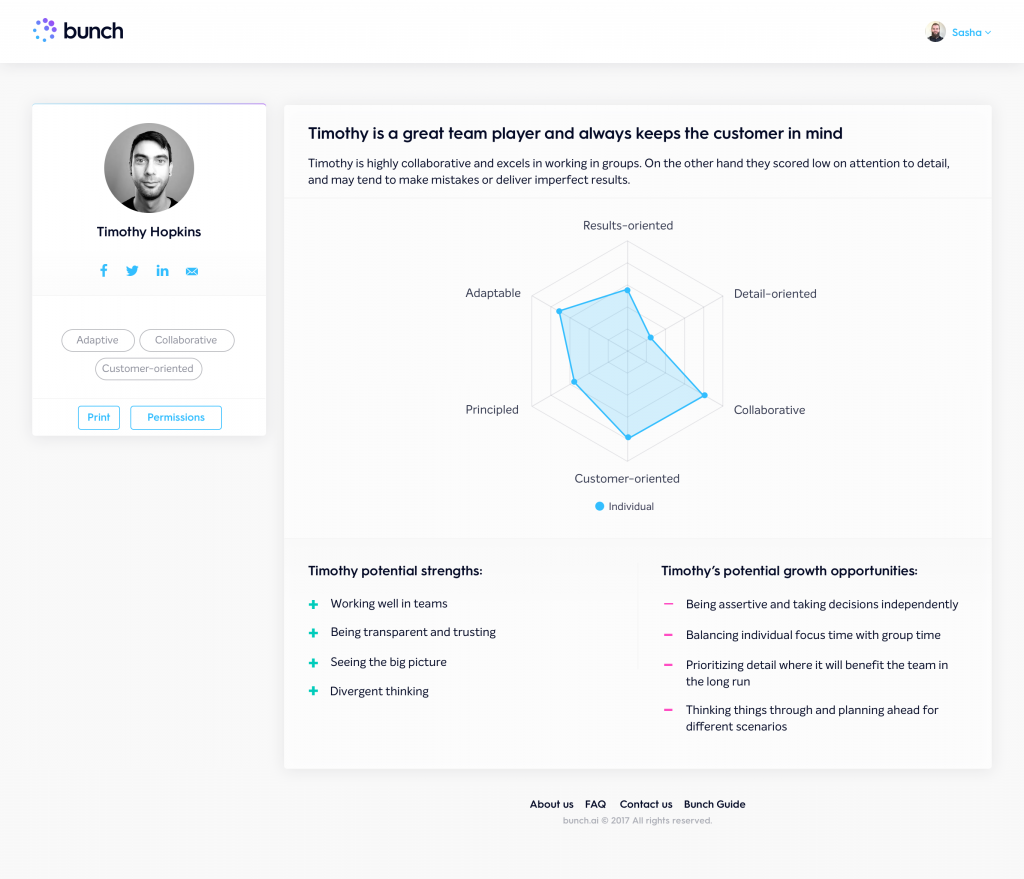So, you’ve taken the assessment, and now you’re looking at some data and wondering how to best interpret it. Did you do well? Did you fail? Is it too late to change some answers? (WHO AM I?)

Don’t worry. We’re here to give a straightforward, yet comprehensive guide to understanding your Bunch profile.
1. You didn’t fail because you can’t fail
There is no failing score on this test. You can’t get an A or an F in culture. Culture is contextual, and there is always room to grow because just like your team itself, culture is always changing. Look at cultural growth as adapting to these changes. Also, know that we don’t measure your skills or personality, the profile is simply a reflection of your priorities. So, keep that in mind and try to come at this experience with a sense of curiosity, and a desire to get to know yourself and your work style even better.
2. There is room for you to grow. Because there is always room to grow
I don’t know about you, but my eyes always flash right to the minus-signs. It’s human nature. However, there’s a reason we name these “potential growth opportunities.” When you look at these, try to think of actions or examples of these points in your own work experience. For more information on how the 6 dimensions translate to real-world behaviors, check out O’Reilly’s paper on the topic here or the table below:

3. Your norms make you exceptional
What you regard as important and right (aka your norms) make you the person you are at work. So what do these most and least valued norms mean? Try to picture them as an insight into what drives you and what “right” and “wrong” looks like for you in a professional setting. They are not related to your performance and thus measuring them is not a performance review or an assessment of your skills. Now take a step back and think about how these priorities translate to your behavior.
Look at strengths and potential growth opportunities that correlate to the behaviors and attitudes associated with your system of cultural norms. Remember, it’s by prioritizing some norms over others that strong culture is made (more on that here). Don’t panic if you don’t completely recognize yourself in these results. These metrics aren’t judgments of your personality or your skills, they are a reflection of your priorities. The good news is, unlike characteristics of your personality, your norms are flexible and within your power to change.
4. This is just the beginning
Here comes the fun part. So far you’ve just completed the assessment. But culture is a collective experience, and it’s all about taking a look at how you fit into your team’s culture! You can take a look at this article to get more insights on how to read the team profile and move towards greater alignment.




